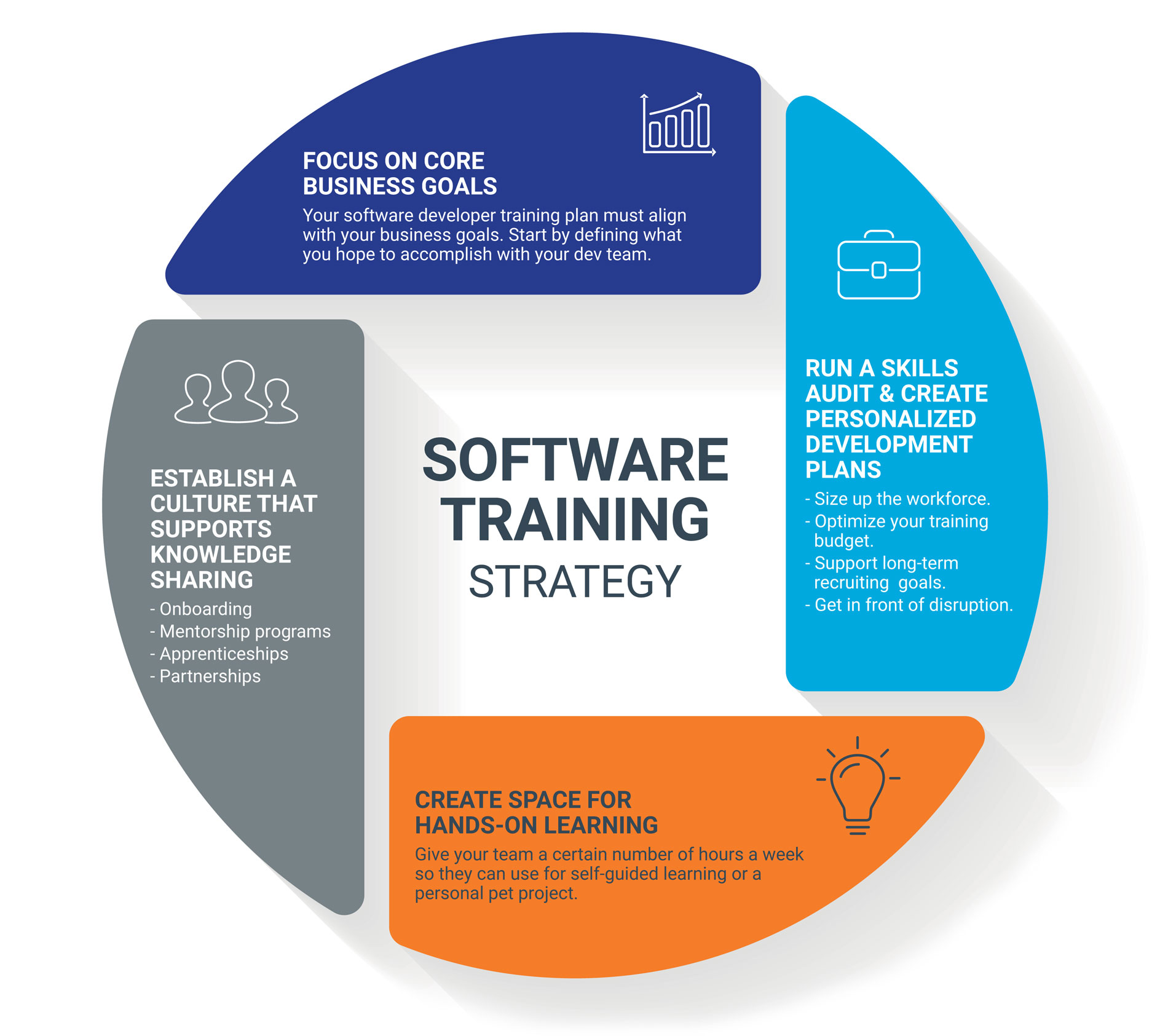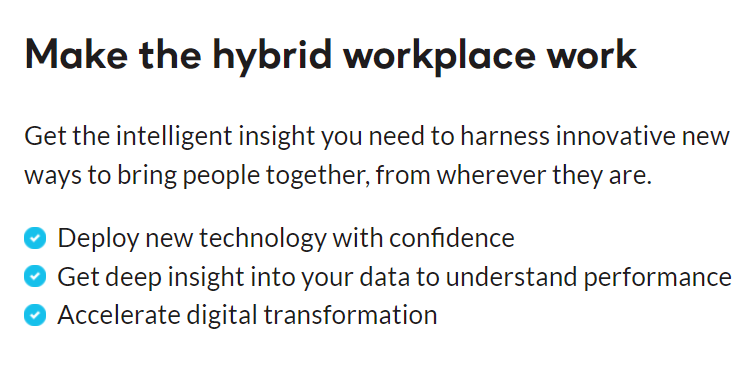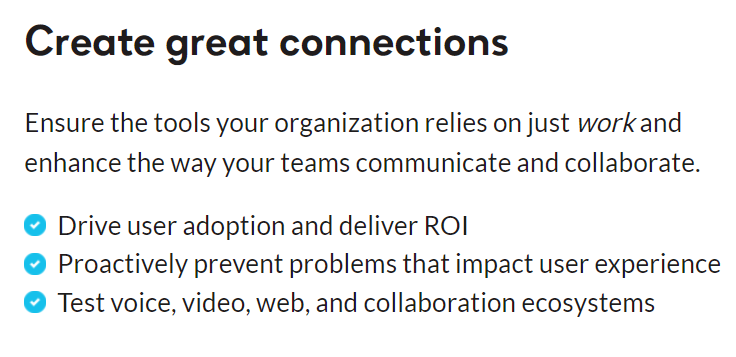The global workforce is experiencing a tidal wave of constantly evolving technology which is catapulting businesses to innovative new levels that even the most savvy haven't expected.
Riding that wave is the urgent need for employees to learn new skills and embrace new technologies. Employers are having to change the way they implement the learning process and review their training methods to keep pace with fast-paced, often complex integrations of new software and applications.
Digital technology is here to stay, and there is no looking back. So employee technology training has become a top priority for companies who want to stay ahead of the competition and be successful in the business world.
Want to find out about the impact of technology on user experience?
Technology training for employees: Why it's important
The adoption of new technology, makes it imperative for management to ensure that their employees can use the technology effectively.
Employee training is essential, and companies need to implement the right technical training programs to equip employees with the necessary knowledge and skill set to use new systems.
If companies are to gain a competitive advantage within their market, they need employees with up-to-the-minute skills. This extends to existing as well as new employees.
First, let's look at the benefits of well implemented employee training programs from different perspectives:
-
Benefits for companies
-
Benefits for employees
-
The potential pitfalls of not having training programs in place

Image source: Threepillarglobal
Benefits for companies
Any successful company knows that its biggest asset is its employees. In today's tech-driven world, employee training is no longer reserved to hone the skills of only C-Suite professionals. It has become the motor that drives business success.
Investing in top talent can result in businesses substantially increasing their profits, and achieving the high staff retention level necessary for sustained business growth.
A good training program is worth the investment, and may actually save money, because replacing talent is significantly more expensive than retaining existing staff.
Research conducted by McKinsey has revealed that there is a clear connection between learning and business success. So it makes sense that technical training programs are becoming a priority for most companies.
Here are 5 of the main benefits companies can expect when they develop a solid, ongoing technology training process.
-
Cost saving – Well trained employees use their time more effectively, and spend less time reactively troubleshooting. This leads to better productivity and a clear focus on revenue-driven tasks.
-
Time Saving - Knowledge leads to efficiency, so with the proper technical training to equip staff with optimal expertise in the new programs and applications they use, they can work smarter and faster.
-
Ensuring confidence – Companies that implement training programs will ensure employees gain confidence in their roles. When staff know how to use their tech tools properly, they'll be far more likely to be motivated and feel pride in their work, resulting in less turnover.
-
Team building – Training very often calls for employees from various departments to learn and work together. This fosters healthy team collaboration and the sharing of hands on experience, making everyone's job easier.
-
Fostering loyalty - Employees tend to leave companies when they fail to see future career growth opportunities. By making technical training and continuous learning options readily available, workers will improve their skills, and ultimately this increases their loyalty.
Want to find out more about how technology affects the digital employee experience?
Employee training program benefits
When instigating new training programs and initiatives, it is important that employees know and fully understand what the company is trying to achieve by implementing it.
This is where gaining buy-in from employees is crucial.
No matter what their job is, every staff member needs to feel that their participation and their support of a technical training program is of great value to their company. However, they also need to know what's in it for them.
-
Career progression - Learning a new skill, or simply updating their technical skills can be of enormous value for staff. It can look great on their CV, but it can also give them the opportunity and motivation to go further within the organization, perhaps even strive for management roles.
-
Encouraging creativity - A good training program can often introduce employees to an entirely different area of expertise. For example the need to learn how to use new software, or mobile devices and other tools can open up fresh possibilities and shine new light on an employee's creative skills.
-
Job satisfaction - It's human nature to want to feel satisfied and proud of your work. A good training program will make staff feel more competent, empowered and a valued part of the company. An improvement in morale leads to deeper engagement, and job satisfaction.
-
Improved communication and collaboration - Training employees can boost team collaboration and interpersonal skills. With today's swing towards remote working, many employees increasingly feel left out of the loop, and lack relationships with their colleagues. Technical training using interactive methods can enhance teamwork, facilitate knowledge sharing and feedback.
The potential pitfalls of not having training programs in place
When it comes to technical training, it's not just about knowing how to use new software, or being comfortable with new tasks. Failure to offer your employees adequate IT training could potentially lead to:
-
Disruption of business operations
-
Productivity and efficiency failure
-
Frustrated and disgruntled employees
-
Missed deadlines
-
Overall reduction in company confidence
Additionally, digital software technologies gather and process huge amounts of data that can potentially be used for business growth. But employees need to know how to use the analytics tools that allow users to gain deep insights into how systems are performing, otherwise the data is of no use.
The massive shift to cloud computing is in itself a learning curve, but trainers need to adapt their teaching processes to create and maintain a clear understanding of how the cloud enhances collaboration in the workplace. This is particularly important with those who are predominantly remote workers.
When you train employees, every training program needs to establish clear and realistic deadlines, and outline rollout processes when introducing new technologies, or risk push-back from staff.
The difference between training and development
Many businesses use the terms 'development' and 'training' interchangeably, but there is a subtle difference.
Development programs tend to focus on expanding the broader skills that employees already have in their current job, with a view to increasing future performance and growth in leadership and decision making roles.
A training program, on the other hand has clear, measurable goals that relate to productivity, learning new skills and acquiring specific knowledge that employees can apply instantly to improve how they work.
Find out more about the importance of putting your employees first
Challenges of training new technologies
The introduction of anything new within an organization can often present challenges.
Technology can improve business processes and enhance productivity, but employees may feel overwhelmed by the idea that they have a lot to learn. Trainers need to carefully select the methods they use to train employees.
Here are some of the challenges, and how to address them.
Resistance from employees
Resistance to change is not uncommon. Employees may feel as though the old tools were the right tools, and see the idea of having to learn how to use new software as unnecessary and adding to their workload.
Solution - Employees are more likely to embrace new tech willingly and eagerly if they have all the information on why it's being introduced. The simplest way to ensure employee buy-in is to invest in intuitive software that will genuinely help them to improve in their day-to-day roles.
Different training curves
As with all learning processes, there are different user types within an organization, and different degrees of tech literacy. Some employees have the ability to grasp it quickly, while others may take more time.
Solution - Choose trainers wisely, and ensure that they understand that not all employees learn in the same manner and at the same rate, and can make allowances accordingly.
Lack of feedback on training
When employers instigate training programs, it's difficult, if not impossible to gauge the success of the program, and whether there are training gaps, without employee feedback.
Trainers will need to know how effective the training has been, otherwise the process will have been a waste of time and company resources.
Solution - There are several ways to collect feedback from trainees and trainers. You could select a representative group of user types across your company to provide feedback throughout the training process. Or run surveys and quizzes, interviews, focus groups and forums, or even self-assessments that can provide you with reliable and valid feedback data.
How to successfully train employees on new technology
Every business is different, so there is no one-size-fits-all method for training employees, whether they are existing staff, or new hires.
But here are some general software training and teaching best practices to help teams develop their old skills and learn new ones successfully.
Use training incentives for employees to use new systems
Trainers can develop incentive and reward packages to help employees become more engaged and motivated to learn new software. On the other hand, it may be as simple as verbal or written recognition that acknowledges their dedication.
Provide flexible training options
Trainers need to take into account remote workers, and if possible, offer flexible training options, either in-person or online.
Trainers need to understand the software
Part of every training plan is to ensure that the trainers themselves can set an example as experts in their field before they develop the training.
Get feedback from employees
Feedback can make the difference between a successful training program or a waste of time. During training, it's a great idea to enable recording, to use for future reference and ongoing training resources.
How IR can help
Employers who offer technology training programs prioritize employee engagement and experience, and these companies are more likely to be successful than those who don't.
Employees should never be left to fend for themselves when trying to figure out how to implement new tech.

Building a seamlessly functioning digital workplace is dependent on acquiring the right technologies and support for the adoption of these technologies.
In addition to real time troubleshooting, monitoring and performance management, IR Collaborate can help you get the intelligent, deep insight you need to understand system performance, technology adoption levels, and device performance, and give you a more complete picture of user experience.

For more on ‘People and Experience in the Hybrid Workplace’




